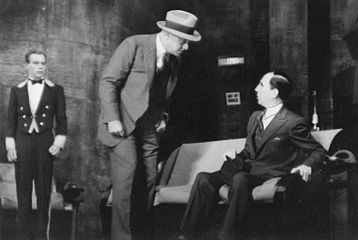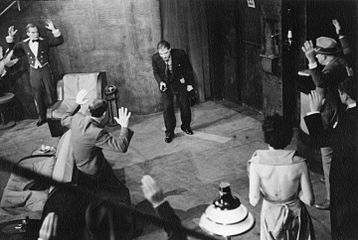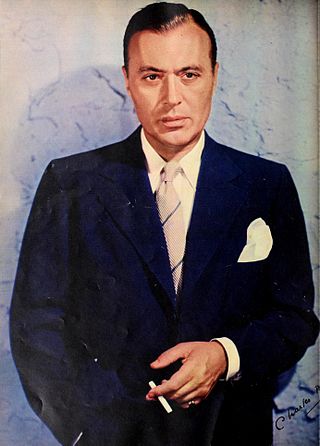
Charles Boyer was a French-American actor who appeared in more than 80 films between 1920 and 1976. After receiving an education in drama, Boyer started on the stage, but he found his success in American films during the 1930s. His memorable performances were among the era's most highly praised, in romantic dramas such as The Garden of Allah (1936), Algiers (1938), and Love Affair (1939), as well as the mystery-thriller Gaslight (1944). He received four Oscar nominations for Best Actor. He also appeared as himself on the CBS sitcom I Love Lucy.
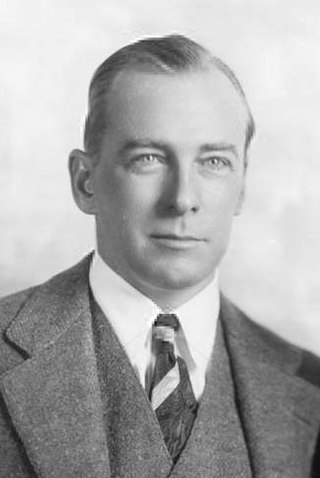
George Francis Abbott was an American theatre producer, director, playwright, screenwriter, film director and producer whose career spanned eight decades. He received numerous honors including six Tony Awards, the Pulitzer Prize, the Kennedy Center Honors in 1982. the National Medal of Arts in 1990. and was inducted into the American Theatre Hall of Fame.

George Raft was an American film actor and dancer identified with portrayals of gangsters in crime melodramas of the 1930s and 1940s. A stylish leading man in dozens of movies, Raft is remembered for his gangster roles in Quick Millions (1931) with Spencer Tracy, Scarface (1932) with Paul Muni, Each Dawn I Die (1939) with James Cagney, Invisible Stripes (1939) with Humphrey Bogart, and Billy Wilder's comedy Some Like It Hot (1959) with Marilyn Monroe and Jack Lemmon; and as a dancer in Bolero (1934) with Carole Lombard and a truck driver in They Drive by Night (1940) with Ann Sheridan, Ida Lupino and Bogart.

Joseph Calleia was a Maltese-born American actor and singer on the stage and in films, radio and television.

Joseph Mansfield Santley was an American actor, singer, dancer, writer, director, and producer of musical theatrical plays motion pictures and television shows. He adopted the stage name of his stepfather, actor Eugene Santley.

Boris Aronson was an American scenic designer for Broadway and Yiddish theatre. He won the Tony Award for Scenic Design six times in his career.
Norman Krasna was an American screenwriter, playwright, producer, and film director who penned screwball comedies centered on a case of mistaken identity. Krasna directed three films during a forty-year career in Hollywood. He garnered four Academy Award screenwriting nominations, winning once for 1943's Princess O'Rourke, which he also directed.

The Paramount Theatre was a 3,664-seat movie palace located at 43rd Street and Broadway on Times Square in Midtown Manhattan, New York City. Opened in 1926, it was a showcase theatre and the New York headquarters of Paramount Pictures. Adolph Zukor, founder of Paramount predecessor Famous Players Film Company, maintained an office in the building until his death in 1976. The Paramount Theatre eventually became a popular live performance venue. The theater was closed in 1964 and its space converted to office and retail use. The tower which housed it, known as the Paramount Building at 1501 Broadway, is in commercial use as an office building and is still home to Paramount Pictures offices.

Ilka Chase was an American actress, radio host, and novelist.

Broadway is a 1926 Broadway play produced by Jed Harris and written and directed by George Abbott and Philip Dunning. It was Abbott's first big hit on his way to becoming "the most famous play doctor of all time" after he "rejiggered" Dunning's play. The crime drama used "contemporary street slang and a hard-boiled, realistic atmosphere" to depict the New York City underworld during Prohibition. It opened on September 16, 1926, at the Broadhurst Theatre and was one of the venue's greatest hits, running for 603 performances.
Dear Ruth is a successful 1944 Broadway play written by Norman Krasna. It ran for 680 performances.

Myron McCormick was an American actor of stage, radio and film.

Four Hours to Kill! is a 1935 American drama film directed by Mitchell Leisen and starring Richard Barthelmess.
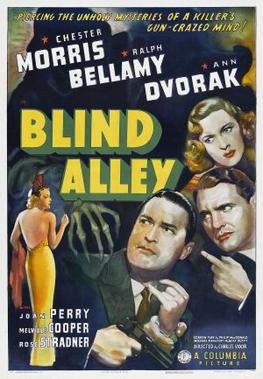
Blind Alley is a 1939 American film noir crime film directed by Charles Vidor and stars Chester Morris, Ralph Bellamy and Ann Dvorak. The film was adapted from the Broadway play of the same name by James Warwick.
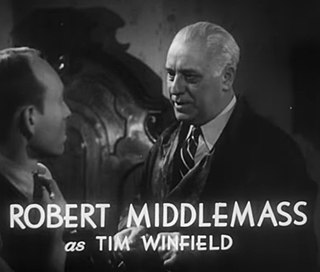
Robert Middlemass was an American playwright and stage actor, and later character actor with over 100 film appearances, usually playing detectives or policemen.
Seven Keys to Baldpate is a 1913 play by George M. Cohan based on a novel by Earl Derr Biggers. The dramatization was one of Cohan's most innovative plays. It baffled some audiences and critics but became a hit, running for nearly a year in New York, another year in Chicago and receiving later revivals; Cohan starred in the 1935 revival. Cohan adapted it as a film in 1917, and it was adapted for film six more times, and later for TV and radio. The play "mixes all the formulaic melodrama of the era with a satirical [farcical] send-up of just those melodramatic stereotypes."
Louder, Please is a play by Norman Krasna, the first of Krasna's plays to be produced on Broadway. It was heavily influenced by The Front Page and also Five Star Final. He wrote it while working as a press agent at Warner Bros. and many of the characters were rumored to be based on real people. Krasna admitted the lead was based on publicity man Hubert Voight and other characters were based on Warners cameraman Buddy Longworth, Bernie Williams and Jack Warner.
The Man With Blond Hair is a play by Norman Krasna based on a true story. Although Krasna became better known for comedy this was a drama; the writer later said that he "really wrote" the play "to win the Nobel Peace Prize". The play only ran for 7 performances on Broadway. This failure prompted him to return to comedy and Krasna wrote Dear Ruth his most popular hit.
My Sin is a 1931 American pre-Code drama film directed by George Abbott, and written by Abbott, Owen Davis, Adelaide Heilbron. It was adapted from the play, Her Past, written by Frederick J. Jackson. The film stars Tallulah Bankhead, Fredric March, Harry Davenport, Scott Kolk, and Lily Cahill. The film was released on October 3, 1931, by Paramount Pictures.
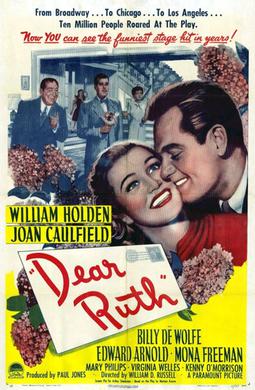
Dear Ruth is a 1947 American romantic comedy film starring Joan Caulfield, William Holden, Mona Freeman, Billy De Wolfe and Edward Arnold. It was based on the 1944 Broadway play of the same name by Norman Krasna.





